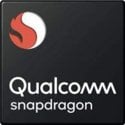Google Tensor G3

Google Tensor G3 review: specs and price
Why is Google Tensor G3 better than the average?
- CPU speed?
1 x 3 GHz & 4 x 2.45 GHz & 4 x 2.15 GHzvs12.14 GHz - RAM speed?
4200 MHzvs1762.75 MHz - Semiconductor size?
4 nmvs17.77 nm - GPU clock speed?
890 MHzvs674.64 MHz - CPU threads?
9 threadsvs6.31 threads - Maximum memory amount?
12GBvs10.01GB - OpenGL ES version?
3.2vs2.98 - DDR memory version?
5vs4.17
Which are the most popular comparisons?
Price comparison
User reviews
Overall rating
Features
Gaming
Performance
General info
890 MHz
Unknown. Help us by suggesting a value.
DirectX 12
Performance
1 x 3 GHz & 4 x 2.45 GHz & 4 x 2.15 GHz
9 threads
Unknown. Help us by suggesting a value.
8 MB
Unknown. Help us by suggesting a value.
Unknown. Help us by suggesting a value.
4 MB
Memory
4200 MHz
Unknown. Help us by suggesting a value.
Unknown. Help us by suggesting a value.
Unknown. Help us by suggesting a value.
Features
Unknown. Help us by suggesting a value.
Unknown. Help us by suggesting a value.
Unknown. Help us by suggesting a value.
Unknown. Help us by suggesting a value.
Unknown. Help us by suggesting a value.
Benchmarks
Unknown. Help us by suggesting a value.
Unknown. Help us by suggesting a value.
Unknown. Help us by suggesting a value.
Unknown. Help us by suggesting a value.
Unknown. Help us by suggesting a value.
Unknown. Help us by suggesting a value.
Unknown. Help us by suggesting a value.
























Comments
Mike
1 month ago
10 / 10
Nice upgrade from the Pixel 6. Runs great so far.
Mike
1 month ago
10 / 10
I don't understand much of the hate towards this phone in the media. The phone runs great, last till the end of the day with charge left over, the screen looks great, and the design is still uniquely a Pixel. The phone seems so small in the hand and in the pocket too. The screen is 6.2 inches instead of (I believe) 6.4 from the Pixel 6. The screen doesn't seem smaller when you're using it though. The screen also gets much brighter in the sun. The speakers sound louder as well. Not record breaking loud but plenty loud enough. The phone also seems plenty powerful. I've never had an issue with the Google Tensor chips with games, video or anything else. They may not be quite as powerful as the comparable Snapdragons or Apple A Series chip but they're by no means weak. I won't pretend like EVERYTHING is perfect though. No Gemini Nano on the Pixel 8 (yet, hopefully) is stupid. It's practically a brand new phone, not that Gemini Nano can do much (also kind of lame). I can't imagine the onboard Gemini needing 12 gigs of RAM to function. I also wish it had a zoom camera lense, even if it wasn't as powerful a the Pixel 8 Pro.
Pros
Cons
Ben
1 month ago
2 / 10
Nope
Ben
1 month ago
2 / 10
It struggles to keep up with two task at the same time.
Ton-618
6 days ago
10 / 10
This is a good processor
Ton-618
6 days ago
10 / 10
really good processor.